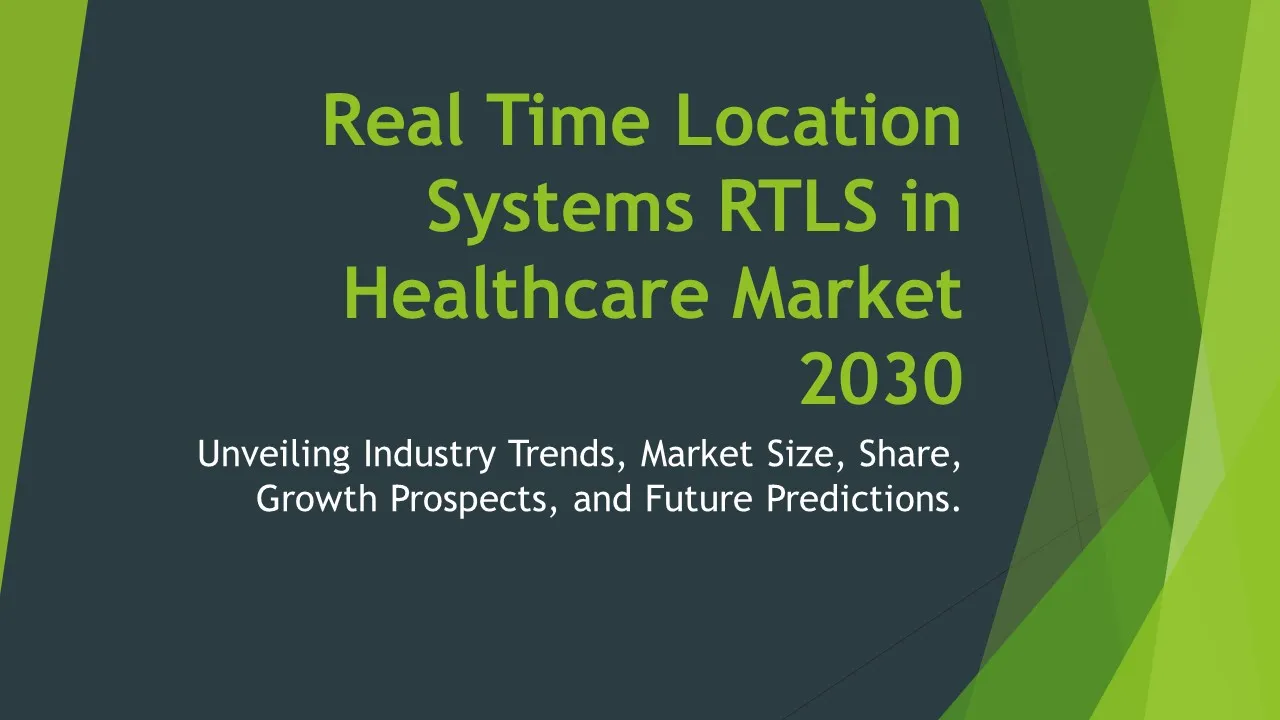Laboratory Management Software
Laboratory Management Software Market Segments - by Product Type (LIMS, ELN, SDMS, CDS, LES), Application (Biobanking, Clinical Research, Environmental Testing, Forensic Science, Pharmaceutical Research), End User (Hospitals & Clinics, Pharmaceutical & Biotechnology Companies, Contract Research Organizations, Academic Research Institutes, Forensic Laboratories), Deployment (Cloud-based, On-premises), and Region (North America, Europe, Asia Pacific, Latin America, Middle East & Africa) - Global Industry Analysis, Growth, Share, Size, Trends, and Forecast 2025-2035
- Report Preview
- Table Of Content
- Segments
- Methodology
Laboratory Management Software Market Outlook
The global Laboratory Management Software market is projected to reach approximately USD 8.5 billion by 2035, growing at a remarkable compound annual growth rate (CAGR) of 10.5% from 2025 to 2035. This growth is primarily driven by technological advancements in laboratory automation and the increasing need for efficient laboratory operations management, which enhances productivity and minimizes human errors. Furthermore, the expanding pharmaceutical and biotechnology sectors are significantly contributing to the increasing adoption of laboratory management systems, as these organizations require robust software solutions to streamline their workflows. The rising concern over data integrity and compliance with regulatory standards is also a vital factor propelling the demand for laboratory management software, as it provides necessary tools to ensure accurate data handling and reporting. Additionally, the growing trend of laboratory digitization is leading organizations to invest in sophisticated software solutions to stay competitive in a rapidly evolving landscape.
Growth Factor of the Market
The Laboratory Management Software market is experiencing robust growth due to several intertwined factors. The rising trend of laboratory automation is a crucial driver, as organizations are increasingly adopting automated solutions to improve efficiency in their processes. Additionally, the increased focus on research and development, particularly in the pharmaceutical and biotechnology industries, necessitates sophisticated laboratory management systems that can handle complex data and processes. The COVID-19 pandemic has further accelerated the adoption of digital solutions in laboratories, as organizations look to streamline operations and manage resources more effectively. Moreover, the growing importance of regulatory compliance and data integrity in laboratory operations compels institutions to invest in advanced software solutions that ensure accurate and compliant reporting. The advent of cloud-based technologies has also made laboratory management solutions more accessible and affordable, enabling small and medium-sized enterprises to leverage these tools effectively.
Key Highlights of the Market
- The Laboratory Management Software market is anticipated to grow at a CAGR of 10.5% from 2025 to 2035.
- Increasing adoption of automation in laboratories is significantly driving market growth.
- Cloud-based deployment models are becoming increasingly popular among end-users.
- The pharmaceutical and biotechnology sectors represent the largest end-user segment.
- Regulatory compliance and data integrity concerns are fueling the demand for advanced software solutions.
By Product Type
LIMS:
Laboratory Information Management Systems (LIMS) are at the forefront of laboratory management software, enabling laboratories to streamline their operations and ensure data integrity. These systems facilitate the management of samples, associated data, and laboratory workflows efficiently, making them indispensable for laboratories across various sectors. LIMS can automate routine tasks, allowing laboratory personnel to focus on more critical activities, such as analysis and interpretation of results. Moreover, these systems provide robust reporting capabilities and ensure compliance with regulatory standards, which is essential for industries that are heavily regulated, such as pharmaceuticals and clinical research. As the need for accurate and timely data reporting grows, the adoption of LIMS is expected to witness significant growth in the coming years.
ELN:
Electronic Lab Notebooks (ELN) are transforming the way laboratory data is recorded and managed. By digitizing the traditional paper-based laboratory notebooks, ELNs facilitate real-time data entry, sharing, and collaboration among researchers, thereby enhancing productivity. ELNs streamline information retrieval and ensure data integrity through built-in security features and audit trails, which are crucial for maintaining regulatory compliance. The growing demand for remote collaboration, particularly in the wake of the COVID-19 pandemic, has further catalyzed the adoption of ELNs across various research and development settings. As researchers increasingly seek efficient ways to document their work, the ELN segment of the laboratory management software market is poised for substantial growth.
SDMS:
Scientific Data Management Systems (SDMS) play a pivotal role in managing the vast amounts of data generated in laboratories. These systems are designed to capture, store, and retrieve data from various laboratory instruments and experiments. By enabling data integration from multiple sources, SDMS facilitate a comprehensive view of the laboratory's output, enhancing decision-making processes. The increasing emphasis on data-driven insights in research and development initiatives is driving the demand for SDMS. Furthermore, as laboratories become increasingly automated and generate larger datasets, the need for efficient data management solutions like SDMS will continue to grow, positioning them as a critical component in the laboratory management software market.
CDS:
Chromatography Data Systems (CDS) are specialized software solutions that manage data generated from chromatographic techniques, such as HPLC and GC. These systems provide features for data acquisition, analysis, and reporting, thereby streamlining the chromatographic workflow in laboratories. As laboratories increasingly adopt chromatographic techniques for various applications, including pharmaceutical analysis and environmental testing, the need for CDS is rising. These systems ensure accurate data handling and regulatory compliance, which is essential in industries where precise data is paramount. The continuous advancements in chromatography technology and the growing demand for efficient analytical solutions are expected to drive the growth of the CDS segment significantly.
LES:
Laboratory Execution Systems (LES) are essential for managing laboratory workflows and ensuring that experiments are conducted according to predefined protocols. These systems facilitate the planning and execution of laboratory processes, providing real-time visibility into the status of tasks and resources. LES enhances accountability among laboratory staff and reduces the likelihood of errors through automation and standardized procedures. The increasing complexity of laboratory workflows and the need for greater efficiency are propelling the adoption of LES in various settings, including pharmaceutical research and clinical laboratories. As organizations seek to optimize their operations and maintain high standards of quality, the demand for LES is expected to witness considerable growth.
By Application
Biobanking:
Biobanking applications of laboratory management software focus on the efficient management of biological samples and associated data. Biobanks play a crucial role in supporting research by providing access to high-quality biological specimens. Laboratory management software in biobanking ensures accurate tracking of samples, their conditions, and associated metadata, which is essential for research integrity. The increasing prevalence of personalized medicine and genomics research is driving the growth of biobanking, necessitating sophisticated software solutions that can handle complex data management needs. As the biobanking sector continues to expand, the demand for tailored laboratory management software is expected to increase substantially.
Clinical Research:
Clinical research applications of laboratory management software are vital for managing patient samples, data collection, and regulatory compliance during clinical trials. These software solutions help streamline workflows and maintain data integrity, ensuring that clinical research adheres to stringent regulatory requirements. The ongoing shift towards evidence-based medicine and increased investment in clinical trials is driving demand for laboratory management solutions tailored for clinical research. As organizations aim to accelerate their research timelines while maintaining high standards of quality, laboratory management software will play a significant role in enhancing the efficiency of clinical research processes.
Environmental Testing:
Environmental testing applications of laboratory management software are essential for ensuring compliance with environmental regulations while managing vast datasets generated from various testing activities. These solutions facilitate the tracking of environmental samples, streamline reporting, and ensure data integrity through robust audit trails. The growing emphasis on environmental sustainability and the need to monitor pollutants and contaminants are driving the growth of this application segment. As governmental and regulatory bodies enforce stricter environmental standards, the demand for laboratory management software tailored for environmental testing will continue to grow, aiding laboratories in meeting compliance requirements effectively.
Forensic Science:
In forensic science, laboratory management software plays a critical role in managing evidence, sample tracking, and ensuring data integrity throughout investigations. The increasing number of criminal cases and the need for accurate forensic analysis are driving the adoption of sophisticated software solutions. These systems provide necessary tools for managing case information, tracking samples from collection to analysis, and ensuring the reliability of forensic results. As law enforcement agencies prioritize the adoption of technology to improve forensic capabilities, the market for laboratory management software in forensic science is expected to expand significantly in the coming years.
Pharmaceutical Research:
Pharmaceutical research applications of laboratory management software are crucial for streamlining the research and development processes of new drugs. These software solutions assist in managing laboratory workflows, tracking samples, and ensuring compliance with regulatory standards throughout the drug development lifecycle. The increasing investment in pharmaceutical R&D and the pressure to bring new drugs to market efficiently are driving the demand for robust laboratory management solutions. As pharmaceutical companies seek to optimize their operations and maintain rigorous quality standards, the utilization of laboratory management software will continue to grow in this sector.
By End User
Hospitals & Clinics:
Hospitals and clinics represent a significant end-user segment for laboratory management software, as they require efficient systems to manage patient samples and laboratory workflows. These institutions utilize laboratory management software to streamline testing processes, ensure timely reporting of results, and maintain compliance with healthcare regulations. The increasing patient load and the demand for more efficient laboratory operations are driving the adoption of such solutions in healthcare settings. As healthcare continues to transition toward data-driven decision-making, the integration of laboratory management software in hospitals and clinics will become increasingly essential for enhancing patient care and operational efficiency.
Pharmaceutical & Biotechnology Companies:
Pharmaceutical and biotechnology companies are among the largest end users of laboratory management software due to their extensive R&D activities. These organizations require sophisticated software solutions to manage complex laboratory workflows, track samples, and ensure compliance with stringent regulatory requirements. The growing emphasis on innovation and the rapid pace of drug development are driving the need for efficient laboratory management systems in these sectors. As these companies strive to enhance productivity while maintaining high standards of quality, the demand for laboratory management software tailored to their unique needs will continue to rise significantly.
Contract Research Organizations:
Contract Research Organizations (CROs) play a critical role in the pharmaceutical and biotechnology industries by providing essential research services. Laboratory management software is vital for CROs in managing laboratory projects, tracking samples, and ensuring timely delivery of results to their clients. The increasing reliance on CROs by pharmaceutical companies to accelerate drug development processes is propelling the demand for efficient laboratory management solutions. As CROs continue to expand their service offerings and enhance operational efficiency, the adoption of laboratory management software will be a key driver of their success in the competitive research landscape.
Academic Research Institutes:
Academic research institutes are significant end users of laboratory management software, as they require efficient solutions to manage various research projects and student activities. These institutions utilize laboratory management software to streamline laboratory workflows, ensure data integrity, and facilitate collaboration among researchers. The increasing focus on research innovation and funding for academic projects are driving the demand for efficient laboratory management solutions. As academic institutions seek to enhance their research capabilities and improve operational efficiency, the adoption of laboratory management software is expected to grow considerably.
Forensic Laboratories:
Forensic laboratories require specialized laboratory management software to manage evidence and maintain the integrity of forensic analyses. These software solutions facilitate the tracking of evidence, streamline workflows, and ensure compliance with legal and regulatory requirements. The increasing emphasis on forensic science in law enforcement, coupled with the growing number of criminal investigations, is driving the demand for sophisticated laboratory management solutions in forensic settings. As forensic laboratories strive to enhance their capabilities and improve the accuracy of their analyses, the adoption of laboratory management software will continue to expand.
By Deployment
Cloud-based:
Cloud-based laboratory management software offers significant advantages in terms of accessibility, scalability, and cost-effectiveness. Organizations can access the software from anywhere with an internet connection, making it ideal for laboratories with remote work arrangements or multiple locations. The cloud deployment model also eliminates the need for costly on-premises infrastructure, allowing organizations to reduce IT costs. Additionally, cloud-based solutions often provide automatic updates and maintenance, ensuring that users always have access to the latest features and security enhancements. As more organizations recognize the benefits of cloud technology, the adoption of cloud-based laboratory management software is expected to grow rapidly.
On-premises:
On-premises laboratory management software remains a popular choice for many organizations that require greater control over their data and IT infrastructure. This deployment model allows organizations to install and manage the software within their own facilities, providing enhanced security and customization options. On-premises solutions are particularly favored by organizations that handle sensitive data or operate in heavily regulated industries. Despite the growing trend toward cloud solutions, the demand for on-premises laboratory management software remains strong, as organizations value the control and flexibility it provides. As a result, this segment is poised for steady growth as laboratories assess their unique needs and regulatory requirements.
By Region
Regional Analysis
In North America, the laboratory management software market is projected to account for approximately 40% of the global market share by 2035, driven by the presence of numerous pharmaceutical and biotechnology companies that rely heavily on laboratory management solutions to streamline their operations. The region's advanced healthcare infrastructure and increasing investments in research and development further bolster the adoption of these software solutions. Additionally, the heightened focus on data integrity and regulatory compliance ensures a continuous demand for sophisticated laboratory management systems in North America. The CAGR for this region is estimated to be around 11% during the forecast period, reflecting the robust growth potential of the market.
Europe is another significant region in the laboratory management software market, estimated to capture around 30% of the global market share by 2035. The growth in this region is primarily fueled by the increasing number of research institutions, pharmaceutical companies, and regulatory bodies that require effective laboratory management solutions. The emphasis on environmental testing and compliance with stringent regulations further drives the demand for specialized laboratory management software. The CAGR for Europe is expected to be approximately 9%, as organizations continue to seek innovative solutions to enhance their laboratory operations and maintain high standards of compliance.
Opportunities
The laboratory management software market is poised for significant opportunities due to the rapid advancements in technology and the increasing demand for automation in laboratories. The integration of artificial intelligence (AI) and machine learning (ML) in laboratory management software offers transformative potential, enabling organizations to analyze data more effectively and optimize their workflows. As organizations embrace digital transformation, the implementation of AI-driven insights can lead to more informed decision-making, driving efficiency and accuracy in laboratory processes. Furthermore, the ongoing trend towards personalized medicine and precision therapies creates a demand for tailored laboratory solutions, providing a unique opportunity for software developers to create specialized products that meet the evolving needs of the healthcare industry.
Additionally, the expansion of laboratory management software into emerging markets presents significant growth opportunities. As developing countries invest in their healthcare systems and research capabilities, there is a growing need for efficient laboratory management solutions. These regions often face challenges related to resource constraints and regulatory compliance, creating a demand for cost-effective and scalable software solutions. By targeting these emerging markets, companies can tap into new customer bases and drive revenue growth while contributing to the advancement of healthcare and research capabilities in these regions. The combination of technological advancements and global market expansion creates a robust landscape of opportunities for laboratory management software providers.
Threats
Despite the promising growth trajectory of the laboratory management software market, several threats may hinder its progression. One significant threat is the rapid pace of technological change, which can render existing software solutions obsolete. As new technologies and methodologies emerge, software providers must continuously innovate and adapt their products to meet market demands. Failure to keep pace with technological advancements can lead to reduced competitiveness and customer attrition. Additionally, the increasing threat of cyberattacks poses a substantial risk to organizations that rely heavily on digital solutions. As laboratory management software often handles sensitive data, any breach or data loss can have severe ramifications for organizations, including financial losses and reputational damage. These challenges necessitate robust security measures and ongoing updates to protect against evolving threats in the digital landscape.
Moreover, the laboratory management software market also faces challenges related to regulatory compliance. As regulations surrounding data management and laboratory operations become more stringent, organizations must ensure that their software solutions meet these requirements. Non-compliance can lead to severe penalties and operational disruptions, which may deter organizations from investing in new software. The complexity of compliance can be particularly daunting for small and medium-sized enterprises with limited resources, hampering their ability to adopt advanced laboratory management solutions. Addressing these threats will be crucial for software providers and end-users alike to ensure sustained growth and success in the laboratory management software market.
Competitor Outlook
- Thermo Fisher Scientific
- LabWare
- Abbott Laboratories
- PerkinElmer
- Agilent Technologies
- Siemens Healthineers
- Waters Corporation
- Veeva Systems
- LabVantage Solutions
- IDBS
- Medidata Solutions
- STARLIMS (a division of Abbott)
- LabCollector
- OpenLab (by Agilent Technologies)
- SYNCHRON (by Siemens)
The competitive landscape of the laboratory management software market is characterized by the presence of several key players that offer a diverse range of solutions to meet the varying needs of laboratories across different sectors. Companies such as Thermo Fisher Scientific and Agilent Technologies lead the market, leveraging their extensive expertise and product offerings to cater to the requirements of pharmaceutical, biotechnology, and clinical laboratories. These market leaders invest heavily in research and development to stay ahead of technological advancements and offer innovative solutions that enhance laboratory efficiency and compliance. Additionally, they have established strong distribution networks and strategic partnerships to expand their market presence and reach a broader customer base.
In addition to the market leaders, several niche players and emerging companies are gaining traction in the laboratory management software space. These companies focus on providing specialized solutions tailored to specific applications or end-user needs. For instance, LabWare and LabVantage Solutions are known for their comprehensive laboratory information management systems (LIMS) that cater to a wide array of industries, including environmental testing and clinical research. These niche players often emphasize customer service and tailored support, allowing them to differentiate themselves from larger competitors. As the demand for customized laboratory solutions continues to rise, these companies play a critical role in addressing the unique challenges faced by laboratories.
Furthermore, increasing collaboration between technology providers and research institutions is shaping the competitive landscape of laboratory management software. Companies such as Veeva Systems and Medidata Solutions have focused on developing cloud-based solutions that streamline laboratory workflows and enhance collaboration among researchers. By leveraging cloud technology, these companies enable laboratories to access their software from anywhere, facilitating remote work and collaboration. The convergence of emerging technologies, such as artificial intelligence and data analytics, is also driving innovation in the market, creating new opportunities for businesses to enhance their offerings. As competition intensifies, laboratory management software providers will need to focus on continuous improvement, customer satisfaction, and technological advancements to maintain their competitive edge in this dynamic landscape.
1 Appendix
- 1.1 List of Tables
- 1.2 List of Figures
2 Introduction
- 2.1 Market Definition
- 2.2 Scope of the Report
- 2.3 Study Assumptions
- 2.4 Base Currency & Forecast Periods
3 Market Dynamics
- 3.1 Market Growth Factors
- 3.2 Economic & Global Events
- 3.3 Innovation Trends
- 3.4 Supply Chain Analysis
4 Consumer Behavior
- 4.1 Market Trends
- 4.2 Pricing Analysis
- 4.3 Buyer Insights
5 Key Player Profiles
- 5.1 IDBS
- 5.1.1 Business Overview
- 5.1.2 Products & Services
- 5.1.3 Financials
- 5.1.4 Recent Developments
- 5.1.5 SWOT Analysis
- 5.2 LabWare
- 5.2.1 Business Overview
- 5.2.2 Products & Services
- 5.2.3 Financials
- 5.2.4 Recent Developments
- 5.2.5 SWOT Analysis
- 5.3 PerkinElmer
- 5.3.1 Business Overview
- 5.3.2 Products & Services
- 5.3.3 Financials
- 5.3.4 Recent Developments
- 5.3.5 SWOT Analysis
- 5.4 LabCollector
- 5.4.1 Business Overview
- 5.4.2 Products & Services
- 5.4.3 Financials
- 5.4.4 Recent Developments
- 5.4.5 SWOT Analysis
- 5.5 Veeva Systems
- 5.5.1 Business Overview
- 5.5.2 Products & Services
- 5.5.3 Financials
- 5.5.4 Recent Developments
- 5.5.5 SWOT Analysis
- 5.6 Medidata Solutions
- 5.6.1 Business Overview
- 5.6.2 Products & Services
- 5.6.3 Financials
- 5.6.4 Recent Developments
- 5.6.5 SWOT Analysis
- 5.7 Waters Corporation
- 5.7.1 Business Overview
- 5.7.2 Products & Services
- 5.7.3 Financials
- 5.7.4 Recent Developments
- 5.7.5 SWOT Analysis
- 5.8 Abbott Laboratories
- 5.8.1 Business Overview
- 5.8.2 Products & Services
- 5.8.3 Financials
- 5.8.4 Recent Developments
- 5.8.5 SWOT Analysis
- 5.9 Agilent Technologies
- 5.9.1 Business Overview
- 5.9.2 Products & Services
- 5.9.3 Financials
- 5.9.4 Recent Developments
- 5.9.5 SWOT Analysis
- 5.10 LabVantage Solutions
- 5.10.1 Business Overview
- 5.10.2 Products & Services
- 5.10.3 Financials
- 5.10.4 Recent Developments
- 5.10.5 SWOT Analysis
- 5.11 Siemens Healthineers
- 5.11.1 Business Overview
- 5.11.2 Products & Services
- 5.11.3 Financials
- 5.11.4 Recent Developments
- 5.11.5 SWOT Analysis
- 5.12 SYNCHRON (by Siemens)
- 5.12.1 Business Overview
- 5.12.2 Products & Services
- 5.12.3 Financials
- 5.12.4 Recent Developments
- 5.12.5 SWOT Analysis
- 5.13 Thermo Fisher Scientific
- 5.13.1 Business Overview
- 5.13.2 Products & Services
- 5.13.3 Financials
- 5.13.4 Recent Developments
- 5.13.5 SWOT Analysis
- 5.14 STARLIMS (a division of Abbott)
- 5.14.1 Business Overview
- 5.14.2 Products & Services
- 5.14.3 Financials
- 5.14.4 Recent Developments
- 5.14.5 SWOT Analysis
- 5.15 OpenLab (by Agilent Technologies)
- 5.15.1 Business Overview
- 5.15.2 Products & Services
- 5.15.3 Financials
- 5.15.4 Recent Developments
- 5.15.5 SWOT Analysis
- 5.1 IDBS
6 Market Segmentation
- 6.1 Laboratory Management Software Market, By End User
- 6.1.1 Hospitals & Clinics
- 6.1.2 Pharmaceutical & Biotechnology Companies
- 6.1.3 Contract Research Organizations
- 6.1.4 Academic Research Institutes
- 6.1.5 Forensic Laboratories
- 6.2 Laboratory Management Software Market, By Deployment
- 6.2.1 Cloud-based
- 6.2.2 On-premises
- 6.3 Laboratory Management Software Market, By Application
- 6.3.1 Biobanking
- 6.3.2 Clinical Research
- 6.3.3 Environmental Testing
- 6.3.4 Forensic Science
- 6.3.5 Pharmaceutical Research
- 6.1 Laboratory Management Software Market, By End User
7 Competitive Analysis
- 7.1 Key Player Comparison
- 7.2 Market Share Analysis
- 7.3 Investment Trends
- 7.4 SWOT Analysis
8 Research Methodology
- 8.1 Analysis Design
- 8.2 Research Phases
- 8.3 Study Timeline
9 Future Market Outlook
- 9.1 Growth Forecast
- 9.2 Market Evolution
10 Geographical Overview
- 10.1 Europe - Market Analysis
- 10.1.1 By Country
- 10.1.1.1 UK
- 10.1.1.2 France
- 10.1.1.3 Germany
- 10.1.1.4 Spain
- 10.1.1.5 Italy
- 10.1.1 By Country
- 10.2 Asia Pacific - Market Analysis
- 10.2.1 By Country
- 10.2.1.1 India
- 10.2.1.2 China
- 10.2.1.3 Japan
- 10.2.1.4 South Korea
- 10.2.1 By Country
- 10.3 Latin America - Market Analysis
- 10.3.1 By Country
- 10.3.1.1 Brazil
- 10.3.1.2 Argentina
- 10.3.1.3 Mexico
- 10.3.1 By Country
- 10.4 North America - Market Analysis
- 10.4.1 By Country
- 10.4.1.1 USA
- 10.4.1.2 Canada
- 10.4.1 By Country
- 10.5 Middle East & Africa - Market Analysis
- 10.5.1 By Country
- 10.5.1.1 Middle East
- 10.5.1.2 Africa
- 10.5.1 By Country
- 10.6 Laboratory Management Software Market by Region
- 10.1 Europe - Market Analysis
11 Global Economic Factors
- 11.1 Inflation Impact
- 11.2 Trade Policies
12 Technology & Innovation
- 12.1 Emerging Technologies
- 12.2 AI & Digital Trends
- 12.3 Patent Research
13 Investment & Market Growth
- 13.1 Funding Trends
- 13.2 Future Market Projections
14 Market Overview & Key Insights
- 14.1 Executive Summary
- 14.2 Key Trends
- 14.3 Market Challenges
- 14.4 Regulatory Landscape
Segments Analyzed in the Report
The global Laboratory Management Software market is categorized based on
By Application
- Biobanking
- Clinical Research
- Environmental Testing
- Forensic Science
- Pharmaceutical Research
By End User
- Hospitals & Clinics
- Pharmaceutical & Biotechnology Companies
- Contract Research Organizations
- Academic Research Institutes
- Forensic Laboratories
By Deployment
- Cloud-based
- On-premises
By Region
- North America
- Europe
- Asia Pacific
- Latin America
- Middle East & Africa
Key Players
- Thermo Fisher Scientific
- LabWare
- Abbott Laboratories
- PerkinElmer
- Agilent Technologies
- Siemens Healthineers
- Waters Corporation
- Veeva Systems
- LabVantage Solutions
- IDBS
- Medidata Solutions
- STARLIMS (a division of Abbott)
- LabCollector
- OpenLab (by Agilent Technologies)
- SYNCHRON (by Siemens)
- Publish Date : Jan 21 ,2025
- Report ID : IT-68797
- No. Of Pages : 100
- Format : |
- Ratings : 4.5 (110 Reviews)









